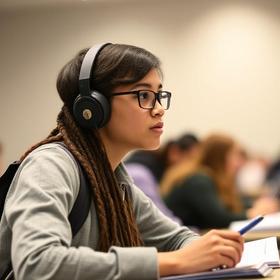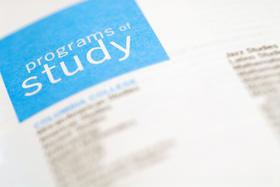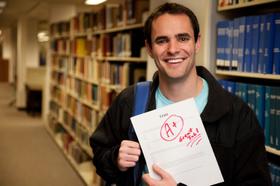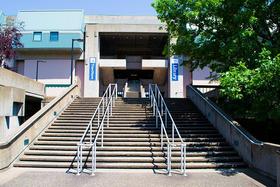For-profit colleges have been a growing sector in higher education in recent decades, but they have also fueled plenty of debate among educators and lawmakers. in 2010, for-profits launched an attack on community colleges, which are their main competitors, and community colleges vehemently fought back against the claims. While these for-profit schools tout their many benefits through expensive marketing campaigns, watchdogs of higher education claim these schools fail to deliver on their promises at a much higher rate than community colleges, public universities, and even some private institutions. A new report from Senator Tom Harkin indicates that these for-profit institutions are missing the mark in educating students and spending student and taxpayer dollars wisely - marking a wide divide between community colleges and these for-profit schools.
About the Harkin Report
The report, dubbed the Harkin Report after its primary author, is a voluminous write-up of nearly 250 pages that details the operations of 30 for-profit institutions around the country, according to Inside Higher Ed. The investigation, which took two years to complete, was headed by Tom Harkin, a Democrat from Iowa. The Democratic Majority and the U.S. Senate Committee on Health, Education, Labor, and Pensions issued the report.
Senator Harkin presented his findings at the end of July. Media, educators, and lawmakers have since scrutinized the Harkin report. While some agree wholeheartedly with the sometimes scathing report, others believe it is just another political ploy to run these institutions out of business. When the report is taken in its entirety, it does appear there is some truth on both sides of the aisle.
This video shows Senator Tom Harkin making a statement on the Senate floor about his report.
Findings in the Report
Some of the most significant findings in the Harkin Report include the following:
High Dropout Rate
The Harkin report found that many students entering a for-profit institution fail to complete the program and earn credentials. The study discovered that over 60 percent of students fail to complete a two-year program at a for-profit school. The Washington Post reports that the average student only remained in one of these schools for four months, which is the approximate equivalent of a single semester. Opponents of the report state that this rate is on par with the dropout rates at community colleges and even public universities, as stated at Community College Spotlight.
Misappropriated Spending
The report also found that for-profit institutions spend an unusually high amount of their resources on “non-education spending,” which includes marketing and profit-sharing. The study showed that 22.4 percent of resources went to marketing campaigns, and another 19.4 percent went to profit-sharing. By the same token, only 17.7 percent of the budget at these institutions went to pay for instruction.
This video from CNN Business looks at some of the failings of for-profit colleges.
High Tuition Rates
Tuition rates at for-profit schools are much higher than those at community colleges or public universities. The Washington Post compared average costs between institutions and found that for-profits charged around $15,000 more for a certificate program, $26,000 more for a two-year program, and $10,000 more for a four-year program than non-profit public schools.
Lack of Accreditation
In some cases, the study found that programs at for-profit did not have accreditation, even if the school was accredited. There were anecdotal reports included in the study and reported by the Huffington Post of students who did not realize their programs were not accredited until they actually completed their studies and tried to get a job in their field. This lack of accreditation was not clearly known to students when they enrolled in the program.
Cost to Taxpayers
While for-profit schools boast that they do not use taxpayer dollars to fund their programs, that is not entirely true. According to the report, these for-profit schools have the highest percentage of students seeking financial aid to fund their studies. While community colleges only have 13 percent of their student population borrowing to pay tuition costs, and public universities have 48 percent of their student population seeking federal aid, for-profit schools have 96 percent of their students receiving some financial aid. Since this includes primarily Pell grants and student loans that taxpayers help fund, the bite out of the taxpayer’s pocket for these schools is actually larger than one might think.
How to Fix the Problems
The Harkin Report did more than list the problems found with for-profit schools; it also provided recommendations on how those issues could be fixed. Some of the recommendations from this report include:
Accreditation
Since lax accreditation is cited as one of the contributors to the problems with for-profit institutions, the Harkin Report recommends tightening accreditation guidelines to more accurately reflect the institution's quality. That process may require additional manpower since the exponential growth of for-profits in recent years has partly contributed to the looser accreditation standards.
“Accrediting agencies have been overwhelmed by the rapid growth of the non-traditional educational organizations, whose size and methods of education are unfamiliar and demand different protocols of assessment,” the report was quoted as saying at Inside Higher Ed.
Federal Regulation
The report also recommended stricter federal rules governing for-profits. This might include a better collection of student data and tying federal aid for students at the school to student outcomes. Other problems at some of these institutions that could be addressed through federal standards include methods of student recruitment, low retention rates, and credentials with little or no value.
For-Profits Here to Stay
Despite the many problems cited with for-profits today, the Harkin Report acknowledges that these institutions will be around for the long haul and will continue to play a significant role in shaping higher education in the future. For that reason, the report stresses the need for higher standards and firmer guidelines that would ensure students who attend these institutions get the quality of education they expect.
Questions? Contact us on Facebook. @communitycollegereview














